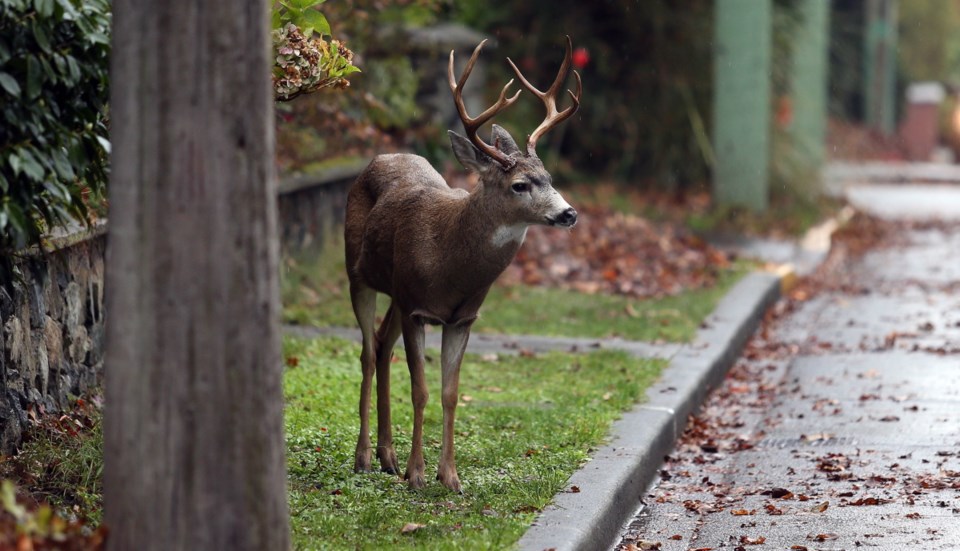Oak Bay’s cull of 11 deer has proven nothing, says B.C. SPCA chief scientific officer Sara Dubois.
“From a scientific perspective, we’ve learned nothing here,” Dubois said.
“What lessons have the [Capital Regional District] learned from this entire three-year process and hundreds of thousands of dollars spent? Is it that they can kill animals in an environment like Oak Bay?”
Oak Bay Mayor Nils Jensen said Tuesday that the cull was a success. It was undertaken last month as part of a $150,000 CRD deer management pilot program.
A provincial permit, issued Jan. 27, allowed for up to 25 deer to be killed. By the time the municipality had a contract in place, the contractor had just 16 days to carry out the cull.
Seven bucks and four does were trapped then killed with a bolt gun.
“I see it as quite successful in that just under two weeks, we were able to capture and euthanize 11 deer,” Jensen said, adding: “If it was run over three months, we would have easily been able to achieve 25 deer.”
Oak Bay’s “learning experience” with the pilot project can now be used to inform other municipalities in the CRD, he said.
Dubois called it “scary” that Oak Bay would make recommendations based on its program.
She said that while overpopulation and deer-vehicle collisions were cited as reasons for the cull, the project targeted neither females nor deer near roads.
“It’s not tackling the overpopulation issue, so that must not be the concern. They didn’t tackle the roadway issue, so that must not be the concern,” she said. “So we don’t understand what the point of this exercise or experiment was.”
Anti-cull advocates from DeerSafe sent out about 5,600 notices to households in and around Oak Bay asking to be notified of any evidence of the cull so they could make a video recording. But the two-week cull was conducted without that happening.
Jensen credited the success of the program to residents who offered their properties to place traps, as well as to city staff and contractor Ron Kerr.
Several property owners volunteered their properties. “We’re grateful for the residents who offered up their yards and homes,” Jensen said.
Oak Bay volunteered to be the first municipality to run the CRD program. Its cull was the first in a densely populated urban setting in B.C., and the first to take place in a mild coastal climate.
“This is a pilot project so part of the reason to go through this was to see can this be done in a densely populated urban community and how can it be done,” Jensen said.
One lesson, he said, was that it is difficult to attract deer into the traps given the abundance of food sources in a coastal climate — a factor that was compounded by an early spring.
A report on the cull will be given to the CRD at the end of March. It will go through the planning and protective services committee and then to the board. A report will also go to Oak Bay.
Lessons learned from deer cull
According to the Capital Regional District, some of the early lessons learned in Oak Bay’s cull include:
- It is possible to undertake such a cull on private property without causing disruption to neighbourhoods.
- More residents volunteered their properties than there were traps available.
- Raccoons and rats triggered the traps on a regular basis. They also chewed the nets, resulting in damage that required repairs.



